The number of occupied housing units in the City of San Juan decreased by 2.6 percent in 2015
The number of housing units in the City of San Juan reached to 26,768, with 28,623 households occupying it, as of August 1, 2015.
The figure above presents the number of occupied housing units in the City of San Juan for the census years from 1960 to 2015.
There was an enormous growth in the number of housing units from 1960 to 1970 and 1970 to 1980 with 82.2 and 45.5 percent respectively. On the following year, it decreased by 7.2 percent. From that time on up to year 2010, the number of occupied housing units has begun increasing again although at a slower pace.
In 2015, the number of occupied housing units decreased by 2.6 percent.
Among the 16 cities in the National Capital Region, San Juan had the least number of occupied housing units contributing 0.9 percent to the whole region.
Majority of the households occupy multi-unit residential
There are six types of housing units: (a) single house; (b) duplex; (c) multi-unit residential; (d) commercial/industrial/agricultural; (e) institutional living quarter; and (f) others that refers to living quarters that are neither intended for human habitation nor located in permanent buildings but nevertheless used as living quarters at the time of census.
Among these types of housing units, 57.0 percent of the households occupied multi-unit residential while 30.8 and 11.5 percent on single houses and duplex, respectively. On the other hand, commercial/industrial/agricultural and institutional living quarters (ILQ) accounted for 0.6 percent. The rest were other types of housing units and not reported.
There are 107 households per 100 occupied housing units
The 2015 Census of Population revealed that there were 28,623 households in the city. On the average, there are four persons per household.
The households-to-occupied housing units resulted to a ratio of 107 is to 100.
More than 95 percent of the housing units are built of strong walls and roofs
Walls of housing units are considered strong if it is made of concrete/brick/stone, wood, half concrete/brick/stone and half wood, galvanized iron/aluminum, asbestos, and glass. Likewise, roofs are strong if it is made of galvanized iron/aluminum, tile/concrete/clay tile, half galvanized iron and half concrete, and asbestos.
Out of 26,768 housing units, 26,035 (97.3%) had strong walls and 26,744 (99.9%) had strong roofs. The rests were made of bamboo/sawali/cogon/nipa, makeshift/salvaged/improvised materials, trapal, and others while some had no walls and had not reported walls and roofs.
Four out of ten households are only renting
Based on the results of the 2015 Census of Population, most of the residents in the City of San Juan were only renting house/room including lot or own-house but rent lot which accounted to 43.9 percent of the total number of households. The buildings being rented were mostly multi-unit residential and single houses.
On the other hand, the number of households who really owned or possessed a house and lot was 10,501 (36.7%). Same way, most of these owned properties were single houses and multi-unit residential.
Meanwhile, 394 (1.4%) households occupied houses or lots without the consent of the owner.
Households still rely on electricity as source of lighting
Majority of the households used electricity as a kind of fuel for lighting with a total of 27,651 or 96.6 percent of the total number of households. This was followed by the use of gases like kerosene and liquefied petroleum gas with 0.3 and 0.02 percent.
People have now shifted with the technology through the usage of solar energy. It was reported that 2.4 percent of the households used solar panel and solar lamps.
Meanwhile, 22 households do not use any and 181 had not been reported.
Majority of the households of the City of San Juan drinks water from community water systems
Residents in the City of San Juan used only four sources of drinking water and majority of them used to drink water from community water systems, either owned or shared, with 64.3 percent. This was followed by bottled water with 33.0 percent and peddler with 2.7 percent.
Aside from drinking, community water systems are commonly used for cooking too
Ninety-six percent of households used community water systems as source of water for cooking, followed by peddler and bottled water with 2.7 and 1.2 percent, respectively.

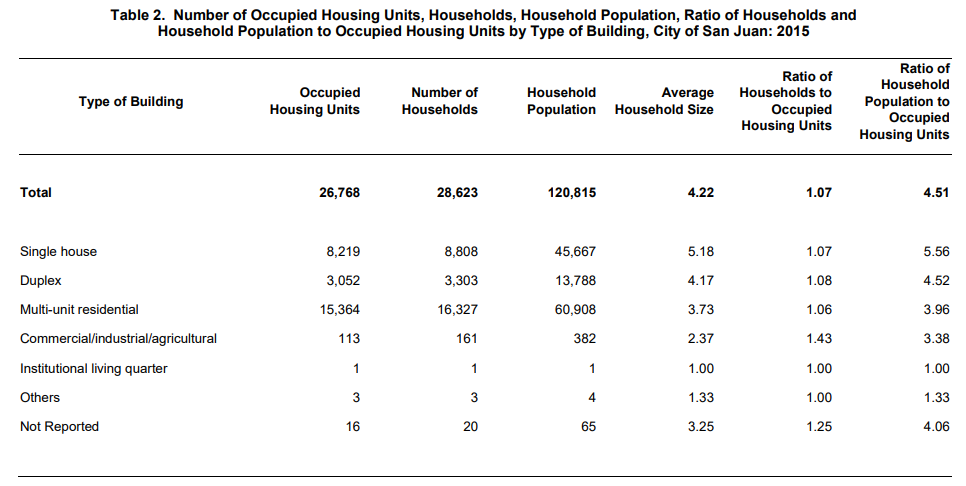
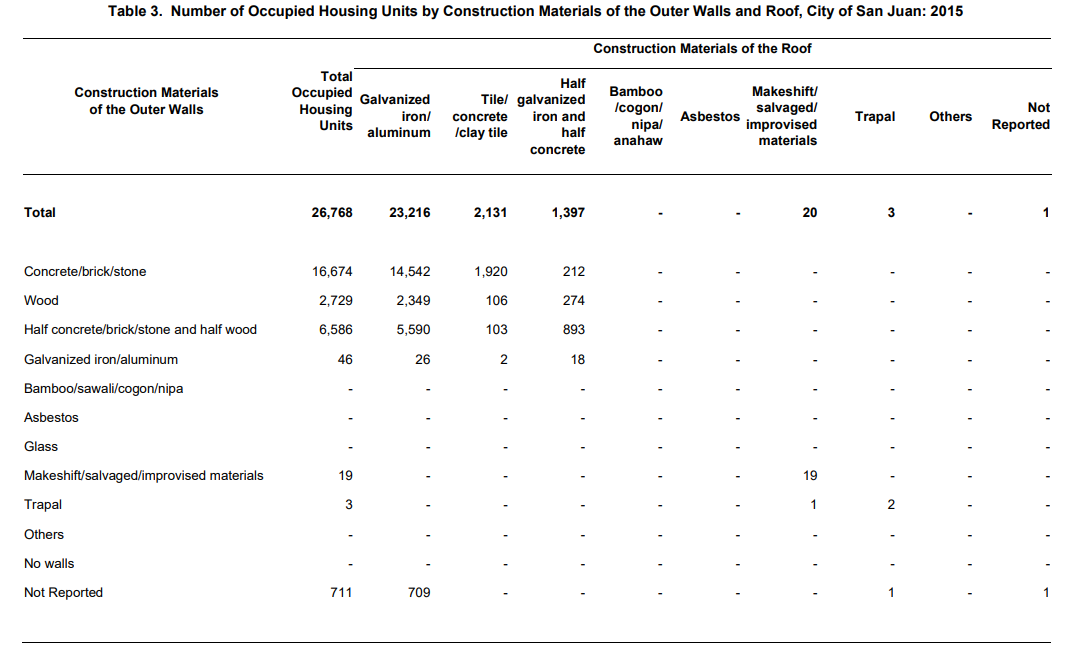
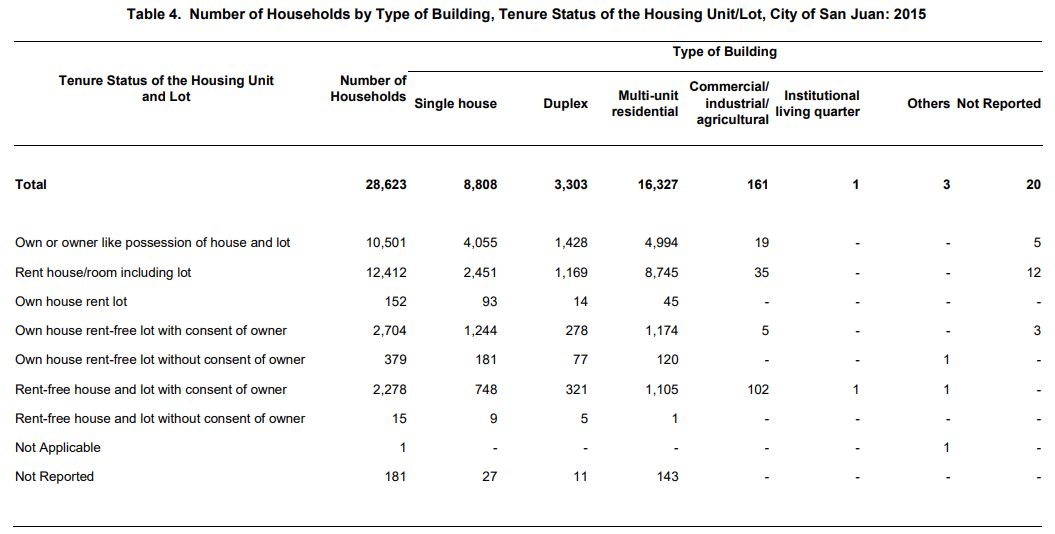
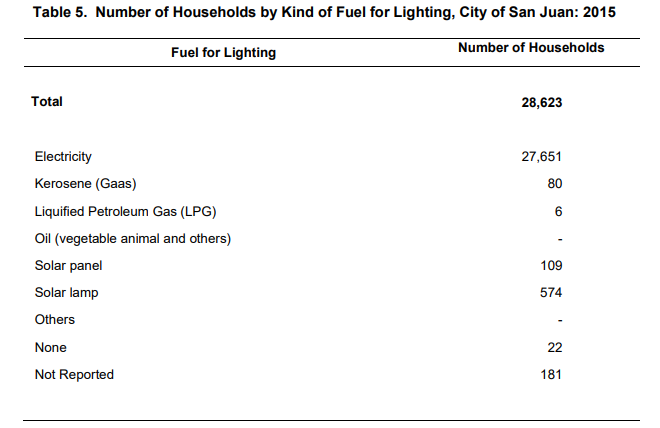
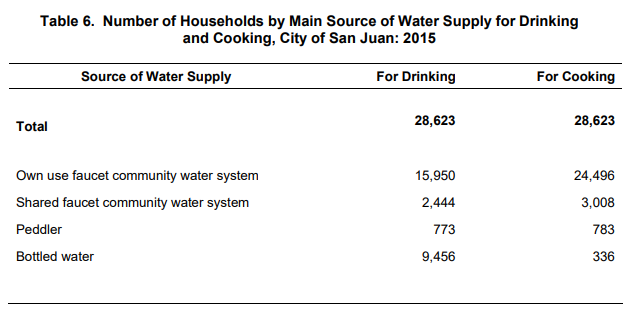
(SGD.) Danilo R. Cubinar
Chief Statistical Specialist
